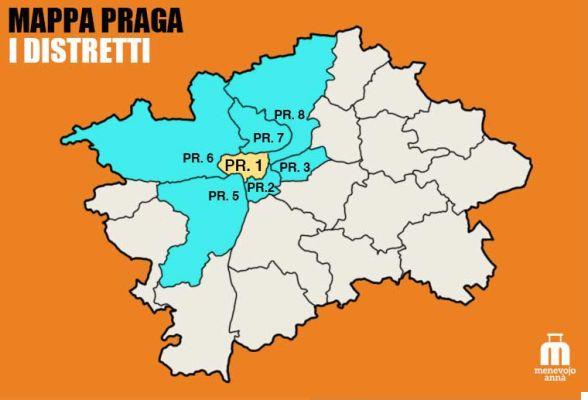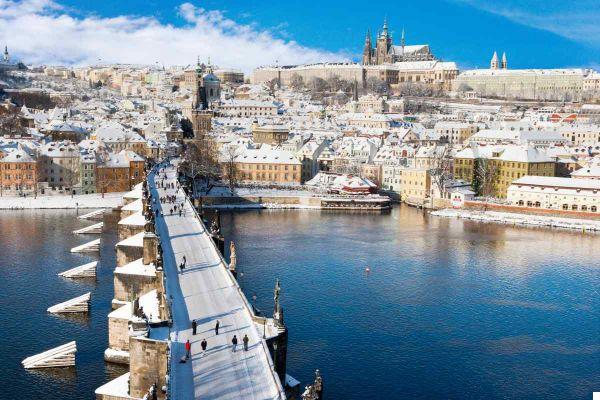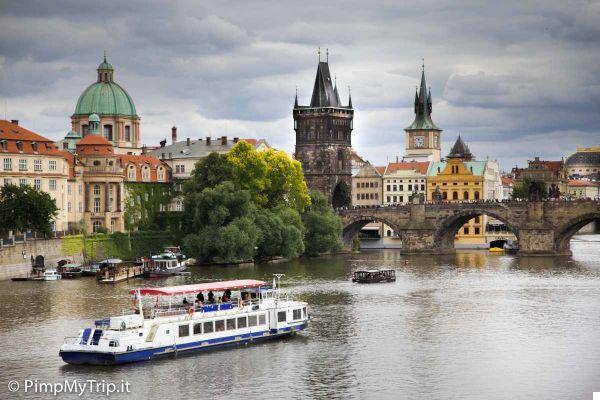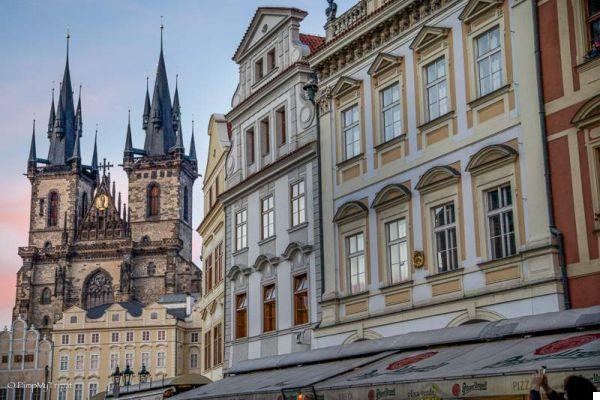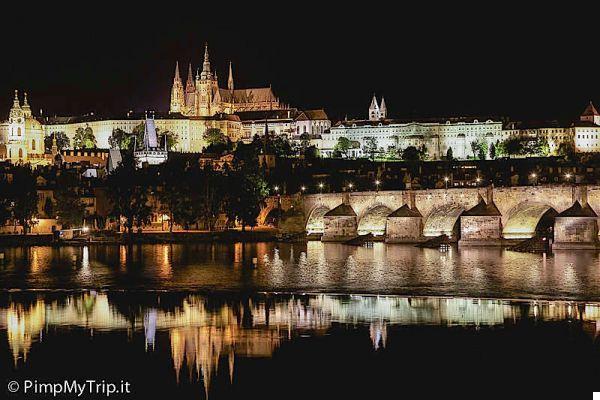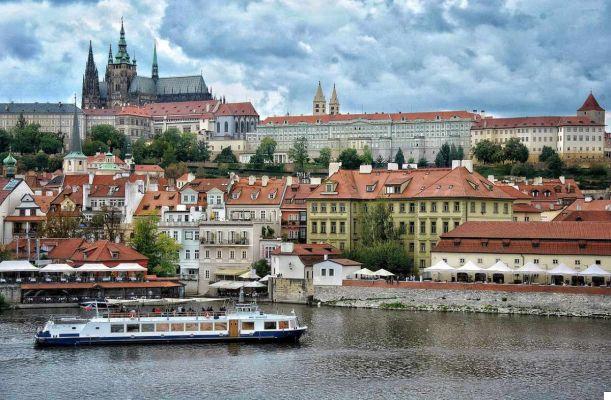Prague is a magical city full of history, culture, art but also of mysteries and legends. Anyone who is fascinated by the climate of the city can imagine, without too much difficulty, how much Prague could have really inspired many stories and some picturesque legends that have been handed down over time and that still today fascinate those who walk its streets.
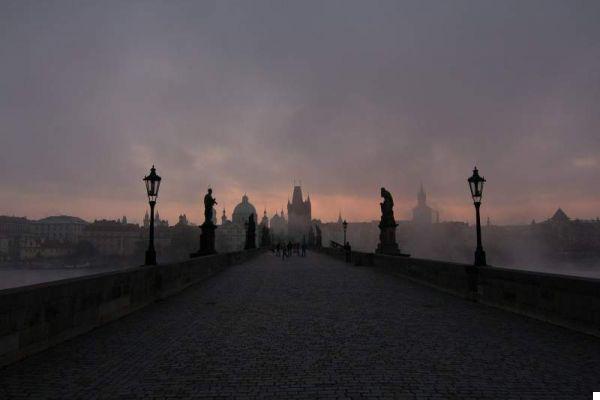
The mysteries and legends of Prague It envelops the city in an intriguing atmosphere full of particular adventures that can be considered a set of probable or absolutely unbelievable truths!
Some stories are associated with monuments, others with particular places in the city, and others with Czech culture and the nationality of which Prague is a part.
These legends and mysteries have inspired the imagination of many, and have even been turned into point-and-click video games to satisfy the curiosity of players who are passionate about unique and fascinating stories!
Let's see together what are the most well-known and intriguing mysteries of the city of Prague along with the oldest and most particular legends that enrich its history and folk tradition.
ATTENTION SPOILERS
If you have decided to participate in the ENGLISH TOUR of Prague's mysteries and legends, reading this publication might spoil the surprise!
This tour is an absolute must on every itinerary to Prague.
1. The Prague Golem and the protection of the Jewish people
The Jewish population of the city of Prague had a particularly dark period long before the notorious confinement in the ghetto during the Nazi persecution. In fact, in the 16th century, Jews were not particularly popular among the local Prague community.
To cope with this difficult coexistence, legend has it that Rabbi Loew literally created a Golem, a figure with human features that, according to Jewish tradition, would protect the people from the persecution of the time.
On the forehead of the Golem, Rabbi Loew wrote the word "emet", which in Hebrew means "truth": this writing, printed on the Golem, allowed the creature to awaken with a spell.
When the spell was pronounced, the Golem stood out to protect the Jewish people, although it gradually presented a side effect: awakening, spell after spell, it became increasingly violent and dangerous, even murderous.
Rabbi Loew was forced to kill the Golem, imprinting on its forehead another inscription that meant "death", provided that his people were no longer persecuted.
Legend has it that the golem was confined, under some sort of apparent death spell, in the attic of the Old-New Synagogue, only to be awakened by Rabbi Loew's son and found still wandering around Prague.
2. The legend of Charles Bridge, between astrological superstition and numerology.
Immense and beautiful, fascinating and particularly austere, even the Charles Bridge has its own legend linked to its construction.
The man in charge of its construction was Charles IV, a man very inclined to give place to astrological and numerical influences to complete any kind of work.
Charles IV supervised every step in the construction of the bridge, including the laying of the last stone. This was laid on July 9, 1357 at 5:31 am: the numerical sequence is very important as the numbers are first in ascending order, then in descending order to be, in general, all odd.
The date, abbreviated according to local custom, can be abbreviated to 13579753.
This particular "numerical" attention of Charles IV allowed, according to the legend, a particular durability of the bridge itself. In fact, it remained standing despite numerous floods, wars and the daily trampling of citizens and tourists.
Charles IV's superstition, according to legend, has been of great help in maintaining the charm and solidity of the bridge over the years.
3 - The Vodnik of Charles Bridge
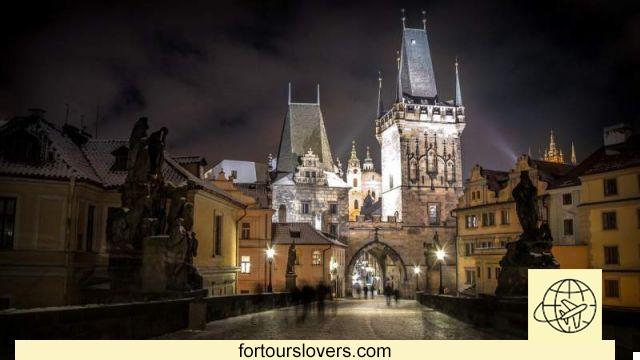
The small, green and mystical Vodník are the water sprites that can also be found in the Vltava and are apparently really evil creatures.
They are also said to be present in Germany, but in a different form: they eventually chose to live in the Czech Republic because of the abundant ponds built in the 16th and 17th century.
It is a green creature, rather short and ugly, with green hair, wide mouth, bulging eyes and water-dripping fur. It can take the form of aquatic animals, as well as a horse or a dog. Her other powers include the ability to control all aquatic animals.
Creepy and super cool: I will introduce you to an original Czech mystical creature: Vodnik, in translation, the Waterman. It is also known to be present in Germany in a slightly altered form, but does not live anywhere else in the world. It probably decided to reside in the Czech Republic because of the abundant ponds built in the southern part of my country in the 16th and 17th centuries.
They are stubby, ugly green creatures with wide mouths, bulging eyes and water dripping from their fur.
There are different versions: some say that rather than evil they are spiteful beings (don't make them angry), others say they are their own true evil souls who like to drown people to win their souls.
Vodniks are soul collectors: when they drown a person they steal their soul (which they jealously guard guard at the bottom of the lake) so they can become more powerful.
The more souls he gains, the more powerful he is. If someone opens the cup with a soul, the soul escapes, is released and the Vodnik becomes "a less powerful soul".
They also get into a lot of mischief: they capsize ships, break nets and block mill wheels.
Some vodniks, however, have been tamed and have learned to live peacefully with people. Some even, if they are in a good mood, help millers work or go to pubs to socialize. They like to sit on the branches of willow trees, on the surface of the water, smoke a pipe or play the violin.
The legend of the Charles Bridge Vodnik tells that the creature moved to live under its arches when its pond was polluted and sullied by a carriage that fell into it.
During its journey to Prague, the Vodnik (which had the ability to transform) made its way to a merchant and the Vodnik saw an opportunity for revenge.
When the wagon arrived in Prague, despite the people's warnings, the merchant watered the horses in the river, the Vodnik dragged him into the current and no one saw him again.
Of him only a hat and a rose remained.
4 - Faust's house
It is said that in this house (Karlovo námestí 40,41 Prague 2) Dr. Faust made a pact with the devil: the devil had to fulfill all his wishes (including that of regaining his youth) and in exchange he offered him his soul.
When the devil went to redeem his debt, Dr. Faustus tried to oppose and the devil took him away by breaking the roof and making a big hole.
The house remained uninhabited for a long time because no one had the courage to go and live there until a penniless student decided to take refuge there for the night.
The first morning and every morning after, the young man found a silver coin near the bed when he woke up. But he became greedy and began to study magic so that he could obtain gold coins instead of silver.
One day his friends visited him, but the friend was gone - the house was upside down and there was a big hole in the roof!
The magician and charlatan Edward Kelley actually lived in this house and accompanied the alchemist John Dee to Prague, both guests at the court of Rudolph II.
Unfortunately, Faust's house is closed to the public. But you can still admire the house from the outside and wonder what macabre history is hidden behind its walls.
5 - The legend of the astronomical clock
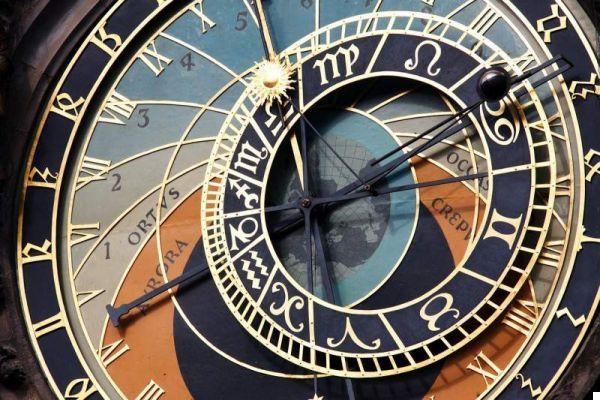
he astronomical clock in Prague is in itself fascinating and particularly suggestive: even without knowing the legends and mysteries that characterize it, one cannot help but be enchanted by its particular architecture and abundance of ornamental details.
The legend we are about to learn about Prague's astronomical clock has something particularly bloody and atrocious about it.
The protagonist of this particularly cruel legend is Hanuš z Růže, a master clockmaker tasked with making the Prague clock unique and incredibly beautiful.
So that his work could not be replicated in any other city or nation, some local politicians organized a brutal ambush for the poor clockmaker: the aim was that to blind the master, so that he could not reproduce his work of art.
Here, then, the legend evolves into two different endings: there are those who claim that the ambush failed and that the master destroyed the clock just after learning of the dark plans aimed at him; there are those who claim that, once he was blinded, the master clockmaker sabotaged the clock so that it would stop working.
In any case, Prague's astronomical clock stood still for more than a century, until an equally skilled and capable master clockmaker could be found to fix it.
How does the Prague Mysteries and Legends tour work?
Obviously, Prague could not miss out on a myriad of tours about the mysteries and legends of the city. Among the many I recommend THIS one with guide in ENGLISH offer to give to the State.
The tour takes place in the afternoon / evening (obviously) when tourists retire to the clubs and the city completely changes its atmosphere: the streets empty and the fog rising from the Vltava envelops the Charles Bridge and the alleys of the Old Town.
The tour starts from Old Town Square and winds through its alleys to the Jewish cemetery. Your guide will tell you about all the bloody legends and mysteries of Prague's ghosts.
6 - The legend of the drowned maiden
The legend of the drowned damsel shrouds in mystery the entire Old Town area of Prague and, more specifically, the one adjacent to the Dum u zlate studne the "house in the golden well".
Legend has it that a servant girl, Lubomira, who served in the sumptuous building, decided one evening to give rise to some rumors that the wells were the guardians of a great treasure.
Driven by curiosity and the mirage of a better future, the maid set out to look inside the well closest to the residence and, leaning a little too far, rushed into the narrow passage.
There was not a soul around, no one to help her or hear her cry.
The poor maiden drowned and legend has it that her ghost still wanders the Dum u Zlate Studne.
7 - The mystery of the (almost) murdered nun
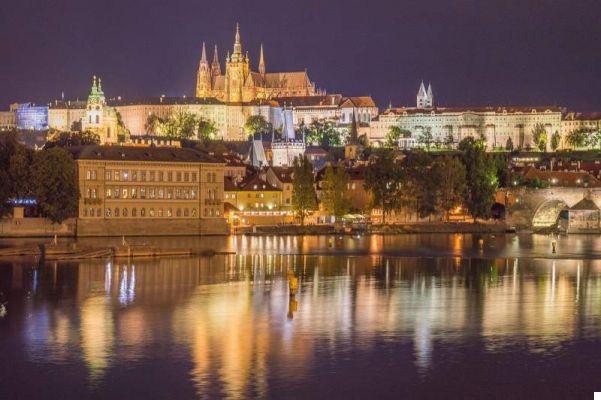
Again a woman protagonist of another somewhat dark legend worthy of a movie of the highest tension... horror!
The setting of this story is the convent of santa agnese, a place where, according to tradition, if you are about to look around the streets surrounding the building you can glimpse the wandering corpse of the murdered nun.
The protagonist of this legend, of noble rank, fell in love, very young, with a gentleman who would never have come close to her social status.
The girl's father never consented to the wedding, due to the difference in rank, on the contrary, he decided to send his daughter to live in the convent of Santa Agnese to take her vows.
The night before her retreat to the convent, the girl decided to meet her beloved on the sly, but it was her bad luck that in addition to him she also met her father who, feeling dishonored, stabbed her for the humiliation she had suffered.
Since then, the nun or, if you will, the failed nun wanders in the form of a ghost around the convent of Santa Agnese, but not to be feared at all!
It seems, in fact, that the ghost is on the side of those who suffer the pains of love and is also worthy of helping the broken-hearted.
8 - The triangle of the white magic: Prague, the magic city
Did you know that Prague is recognized as the capital of magic art?
Harry Potter fans, report back!
We have understood together how many mysteries, myths and legends are part of the city of Prague, it is not hard to believe how much magic can be found in the streets of this splendid city!
Prague is part, together with Lyon and Turin, of the triangle of white magic: its charm and strategic position make it one of the most important esoteric centers in the world.
The glorious era from the esoteric point of view was that of the 16th century, when Rudolf II, admirer of alchemists and scholars of magic formulas, reigned over the city.
Charles IV, another ruler of the city of Prague in the 14th century, was also fond of magic and the Charles Bridge, whose construction he commissioned, is a symbol of the magical charm and power of the occult arts.
The charm of Prague, like the other cities of the triangle of white magic, has come to us through centuries of passionate alchemists, dreamers, esotericists and occult scholars.
Every monument, like the Charles Bridge, every ornament, like the astronomical clock, has many meanings locked in its architectural uniqueness to be discovered.
9 - The visionary story of the birth of Prague
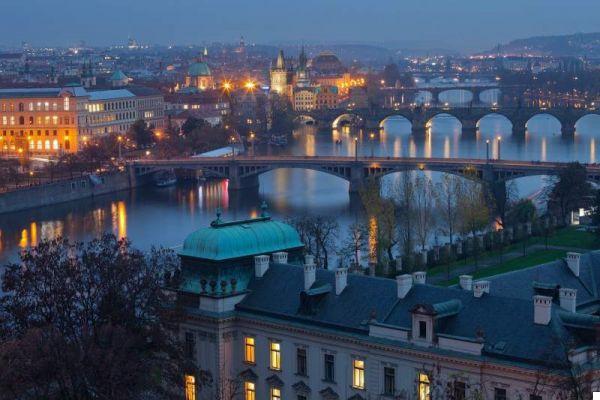
The birth of the city of Prague is also shrouded in legend. How could it not be! According to tradition, the birth of Prague was to be attributed to Princess Libuse who, during the 7th century, ruled the territory adjacent to what was to become Prague together with her husband.
The princess was known to all for her eccentric behavior and particularly inclined to listen to her so-called "visions" and prophetic illuminations. The princess used to make her decisions based solely on what her mind processed in the form of visions.
On the day the "project", if we want to call it that, of the city of Prague was born, Princess Libuse was observing her lands from the castle of Vyšehrad and had a vision.
In the course of this vision, she saw that, right on the territory in front of her, a large city would arise.
Evidently, people gave a lot of space to the princess's antics and, before long, some men began to build. In particular, we remember the first construction: the threshold (in Czech, Prah) of a new house that a man was about to build.
The new city imagined by Princess Libuse took its name from this first building and from the detail of the threshold, Praha.
10 - The legend of the Daliborka tower and its sweet music
Part of Prague Castle, the Daliborka Tower has its own rather romantic legend. According to tradition, the tower, which until the end of the 18th century was used as a prison, takes its name from the first prisoner imprisoned there, a knight, Dalibor.
Dalibor had been sentenced to prison for sheltering rebellious peasants in his house, allowing them to escape from their masters. This selfless behavior, to say the least, cost him prison.
During his prison sentence, Dalibor took advantage of the time he had to learn to play the violin in such a sublime way that many people gathered under the tower to listen to him.
The sad end was when the crowd no longer heard the enchanting notes played by the gentleman: the silence that flowed from the tower was the confirmation of the prisoner's murder.
5 / 5 ( 3 votes)



